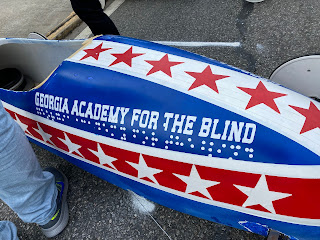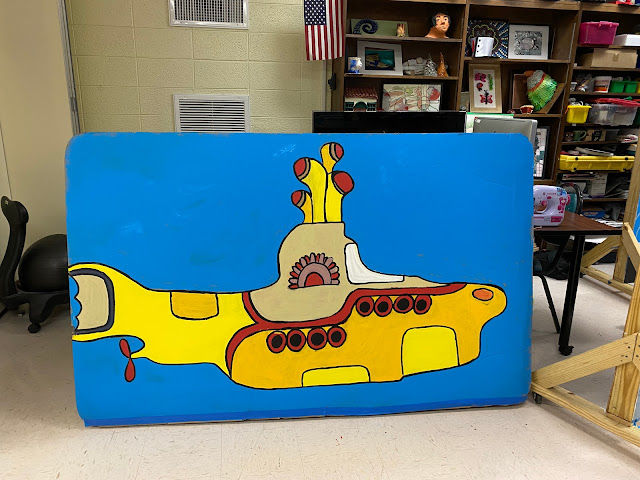My students made hats as part of a Careers in Art: Costume Design assignment that also served as a "Let's make hats to use for our Wonderland Prom!" project. That was a couple of years ago, and now that we're finally going to use the hats as table center pieces, I thought hat stands were in order. You don't want to just have a few hats of the same height sitting next to each other, you want to create some negative spaces and differing heights for visual interest.
I used some dove candy canisters, which were already gold (under the paper wrapping), and a poster canister, which I painted gold, and glued a cardboard top to each. Done. I also found a little wire spool, which was an easy, mini hat stand once it was painted.For the rest, I wrapped paper towel tubes (cut to various lengths) with vintage looking wall paper. Wall paper was also wrapped around square pieces of cardboard for the base. These are a little wimpy, and so you need to be sure the paper is securely glued to the top of the cardboard base, so the tube is more secure. I also filled the tubes with sand to give it some weight and stability. The trick then is to put the glue on the top of the tube and attach the cardboard top without lifting the tube upside down to attach it, or you'll have a big, sandy mess. Another tip is to cut vertical slits in the top of the tube, and fan out the tabs like flower petals so the hot glue has more area to stick to the top. I didn't worry about decorating the top since they'll all be covered with hats, but a little lace around the edges might be a nice touch.



































